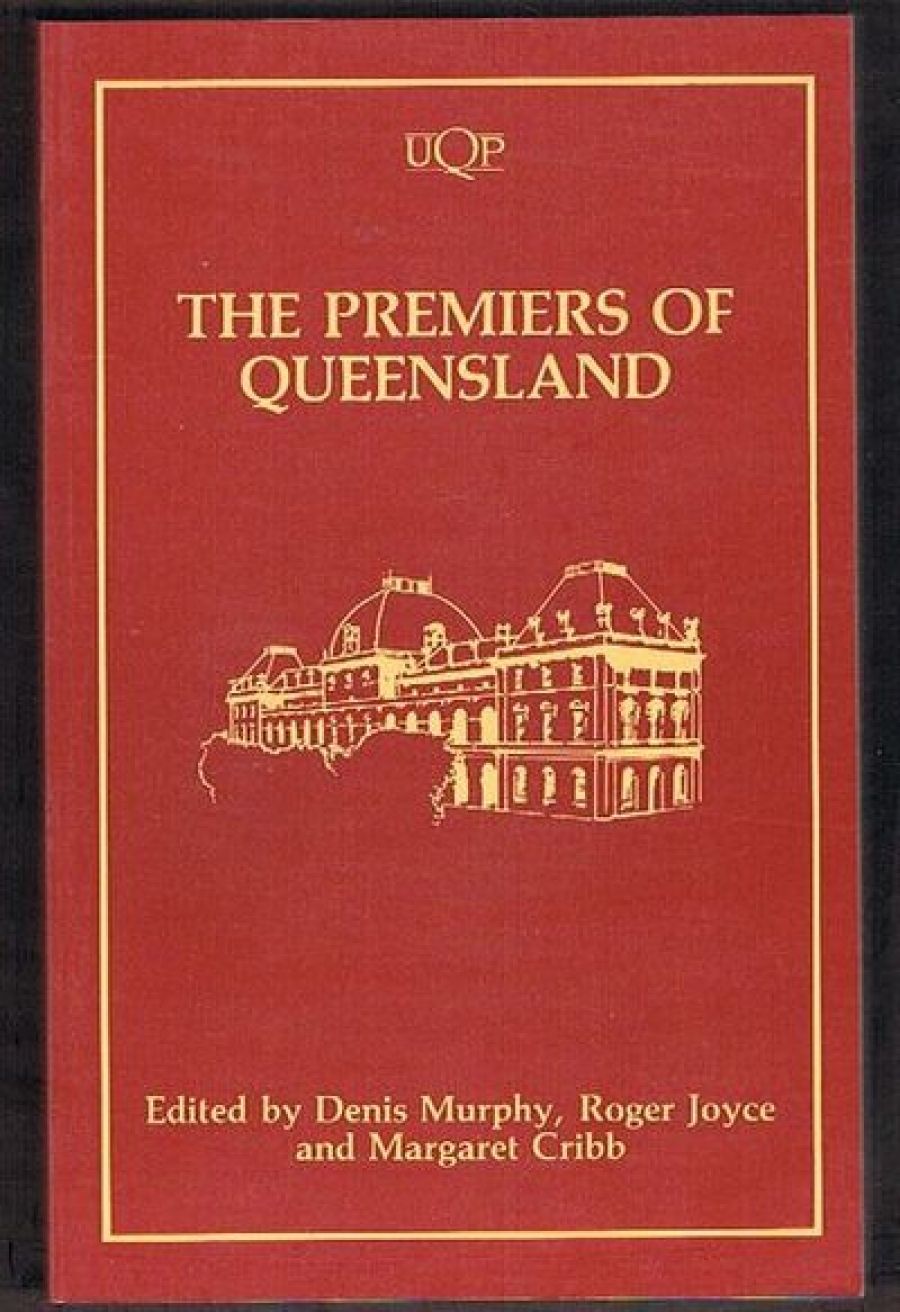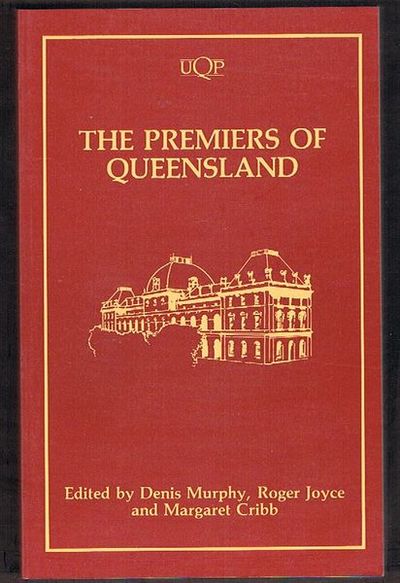
- Free Article: No
- Review Article: Yes
- Article Title: Drab Caricatures
- Online Only: No
- Custom Highlight Text:
Queensland’s history is different in many respects from the older states, and similar only to Western Australia in features such as its vastness, its relative emptiness and its history as the last of the ‘frontier’ states. It is easy to caricature Queensland as historically and naturally conservative, even reactionary, by comparison to its more cosmopolitan, liberal and tolerant counterparts in the south-eastern corner of Australia. This is the state in which, if Henry Reynolds’s estimates are accepted (as they still generally are, despite the notorious efforts of Keith Windschuttle), half of the 20,000 Aborigines killed in violent conflicts with European settlers in Australia met their deaths. This is the state that gave us Joh Bjelke-Petersen and all the corruption that went with his government. And this is the state that was home to Pauline Hanson’s One Nation Party, and that gave it twenty-three per cent of the vote and ten seats in the 1998 state election.
- Book 1 Title: The Premiers Of Queensland
- Book 1 Biblio: UQP, $35 pb, 482pp
- Book 1 Cover Small (400 x 600):

- Book 1 Cover (800 x 1200):

But the distinctive features of Queensland politics are not all concerned with the forces of conservatism and reaction. Queensland saw the world’s first Labor government, under Anderson Dawson, albeit one that lasted a matter of a week. It was the only state to maintain a Labor government in World War I, when Thomas Ryan’s government stood alone and bravely against Billy Hughes and his Nationalists, and controversially fought Hughes’s demagogic pursuit of conscription. Labor maintained an almost continuous hold on office from 1915 to 1957, interrupted only by three years of Country Party government in the Depression, and ending only when the Labor premier was thrown out by his own party organisation. It was, moreover, the first state to dispense with its upper house when the Legislative Council, traditionally the preserve of the conservatives, was abolished in 1922.
All of this should make for a fascinating study of the men (and they are all men) who have been at the helm of Queensland politics. Great men might no longer be accepted as the driving forces of history; but in a state with a distinctive political history and with a tradition of authoritarian leaders, weak parliaments, considerable state chauvinism and oddball political figures, the place of the individual might be expected to be more important, revealing and interesting than in the more conformist and conventional political histories of, say, New South Wales or South Australia.
The heightened sense of expectation makes this collection all the more disappointing. It is, with the exception of a few of the biographies, uninspiring. The dated nature of the book extends largely from the fact that this is the third edition of a collection of political biographies originally published in 1978, then published in revised form in 1990. Between the first and second editions, two of the principal authors, Denis Murphy and Roger Joyce, passed away, while Margaret Cribb died in 1993. Along the way, new chapters have been added on Bjelke-Petersen, Mike Ahern, Wayne Goss, Rob Borbidge and Peter Beattie, while the colonial premiers included in the first edition have been culled. Eerily, one of the original authors, Roger Joyce, who wrote some of the colonial biographies, survives in this latest incarnation of the collection only as the co-author of the introduction to the 1978 edition.
Twenty-five years on, as might be expected, the chapters from the 1978 edition have a dated air about them. Interesting though some of the political machinations are, and interesting characters though some of the premiers undoubtedly were, particularly Ryan and E.G. Theodore, their biographies have a flat and lifeless feel. If some of the stories are absorbing (such as Ryan, the anti-conscriptionist, being chaired through the streets in 1917 by returned soldiers, or Theodore, the economics expert, being embroiled in financial scandals), their telling is disappointing. The most interesting parts of the book are towards the end, in the more recently written chapters. To be fair, later writers had the colourful Bjelke-Petersen and his fraught successors to write about, but the interest is due to the narration as much as to the intrinsically compelling subject of Bjelke-Petersen’s Queensland and its rehabilitation.
The highlight is James Walter’s superb chapter on Bjelke-Petersen. Walter manages to be sensitive but scathing at the same time. He recounts Bjelke-Petersen’s long list of sins as premier: he was ruthless; he could not see differences of opinion as creative; he presided over widespread corruption; he had little understanding of the Westminster system and gave farcical replies to the Fitzgerald Inquiry when questioned on the separation of powers; he gerrymandered, and so on. But, at the same time, Walter evocatively and sensitively teases out Bjelke-Petersen’s world view and its origins. The son of poor immigrants, he worked extraordinarily hard and with considerable innovation and foresight to turn unpromising landholdings into considerable wealth before entering parliament. His faith, his upbringing and his experiences left him convinced of the virtues of hard work and of getting the job done, even if parliamentary processes, and laws, had to be trampled in the process. Bjelke-Petersen is easily maligned; Walter’s masterly chapter allows him to be understood. Walter’s work is, however, a bright light against a drab background.


Comments powered by CComment